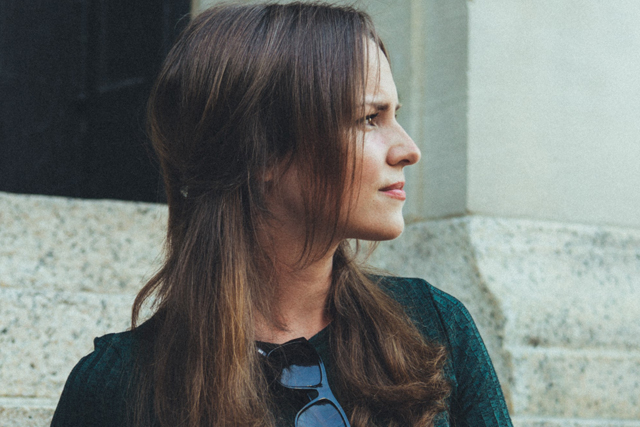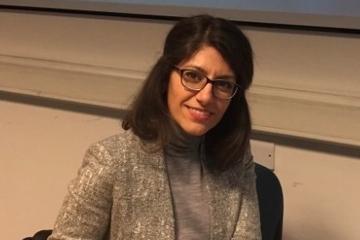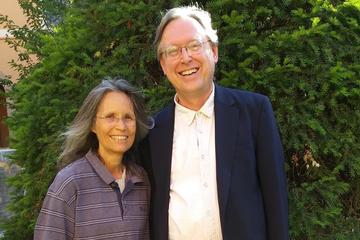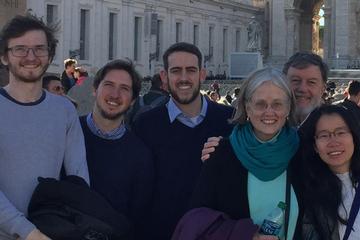
By Elena Dini
ROME — From the United States to Rome and back again. Amy Giuliano’s mission to bring the beauty of sacred art to university classrooms around the world has her making this trip quite often.
The young university lecturer and virtual tour entrepreneur presented on the theme, “A Lenten Pilgrimage: The Art and Architecture of the Roman Stational Liturgy” at The Lay Centre March 14.
Giuliano was trained in virtual reality technologies at Yale’s Center for Collaborative Arts and Media and is a graduate of art history and religious studies from Yale’s Institute of Sacred Music and Divinity School. She studied in Rome at the Pontifical University of St. Thomas Aquinas and, during her time in Rome, worked as an art history guide.
Back in the United States, as an adjunct professor at Sacred Heart University, she realized many of her students would not have the chance to travel to Italy and see the wonderful works of sacred art that she had the privilege to see. She decided to make these sites accessible to them in a meaningful, attractive and interactive way and founded VADIS VR, a company that creates virtual educational tours of sacred and historic art and architecture.
During her lecture at The Lay Centre, Giuliano invited her audience to enter the beauty and richness of one of the Lenten station churches in Rome: St. Praxedes. Catholics who visit the station churches during Lent pray in this ninth-century basilica on the Monday of Holy Week.
Giuliano offered her audience a virtual tour into this jewel box of a church, including its many hidden gems, such as the mosaic ceiling of the Byzantine-style Pantocrator in the small St. Zeno Chapel, which features Jesus surrounded by four angels.
“Each of the tiny little ‘tesserae’ (tiles) used for the mosaics is set at a slightly different angle and this gives a glittering effect,” she said. “The movement of light enlivens these figures and invites you to contemplate, making you feel you are having a sort of heavenly vision.”
Giuliano explained some of the origins of the symbols used in Christian iconography to communicate martyrdom.
“There is a lot of quoting the visual language of pagan Rome here,” she said. “We know that if you won a race or an Olympic game in those times, you were rewarded with a crown and a palm branch. These were signs of victory. Christians adopted them and raised them to another level with people waving palms to the martyrs who are wearing crowns of victory.”
An unknown fact to many visitors of the basilica is that the ninth-century pontiff Pope Paschal I gathered the remains of 2,300 Roman martyrs in the crypt below the altar of St. Praxedes, she said.
“Over this foundation of relics, this church’s mosaics visually manifest the beauty of martyrial sacrifice and epically memorializes the martyrs’ eternal triumph,” she said.
After speaking about the basilica, Giuliano introduced the audience to her virtual reality work, in particular, her virtual tour of St. Praxedes, which won her the Yale Innovation Prize. Giuliano uses 3D laser scanning technologies and embeds the tours with interactive audio, video, and text, to allow viewers to feel as if they are visiting the site in person.
Giuliano said her students in the United States who use her technology report “that they would otherwise not have known these sites existed, and that they learned a lot about the meaning behind the art and architecture.”
Her pedagogical tool is also a means to invite students to go deeper into their own spirituality.
“While my students might not necessarily choose to read a lengthy theological treatise, they are easily visually engaged with these tours,” Giuliano said.
For more information on VADIS VR or to take a tour, click here


